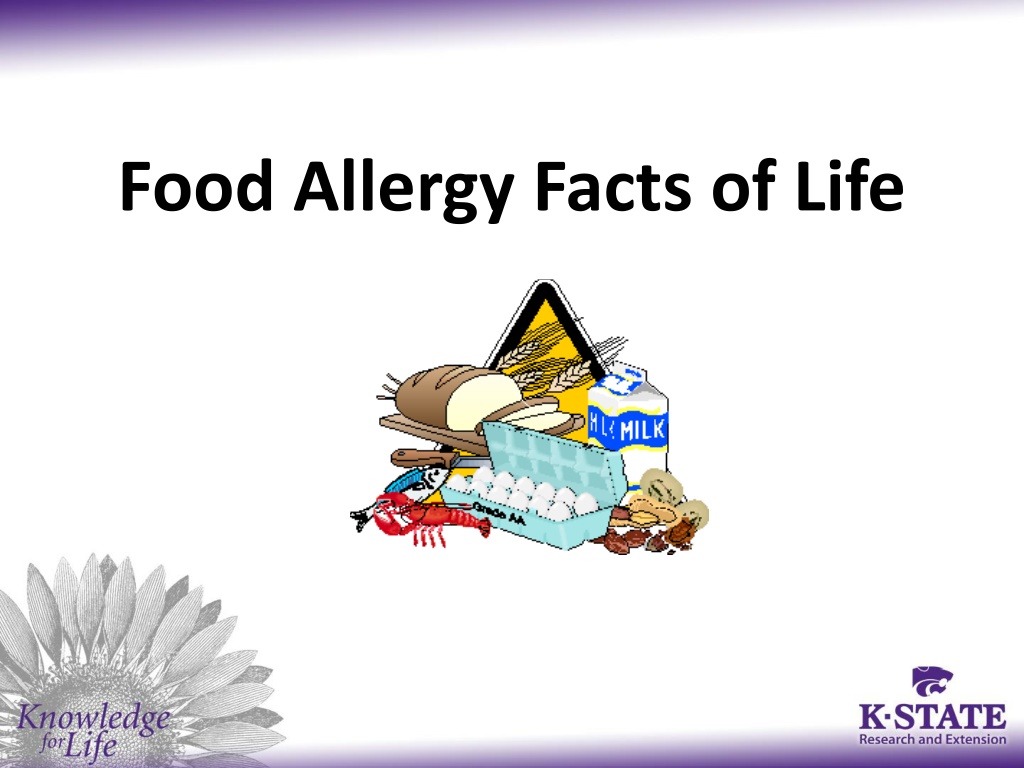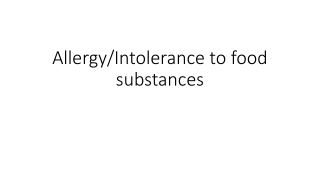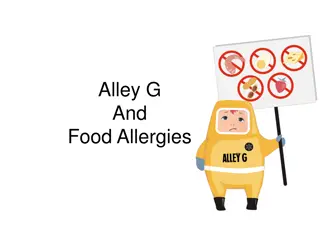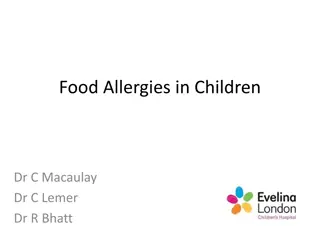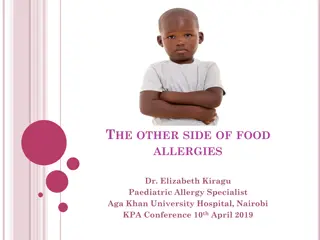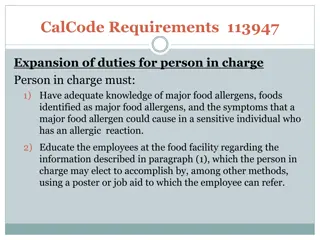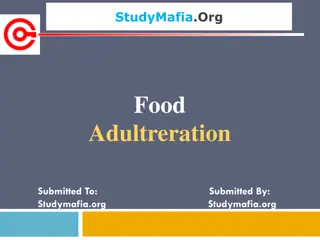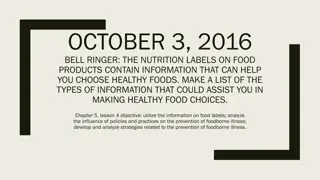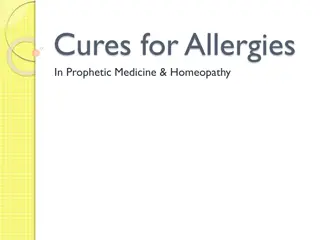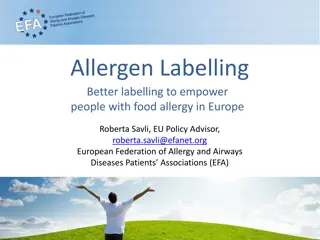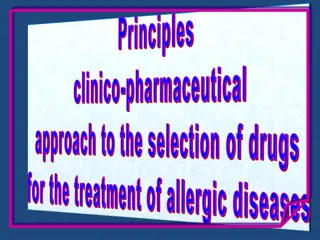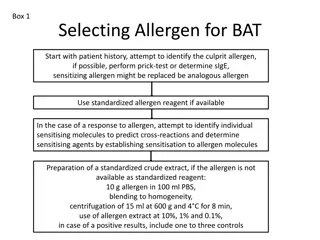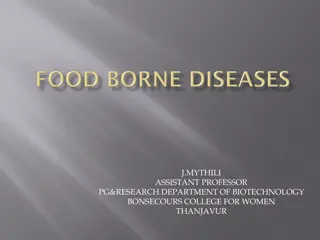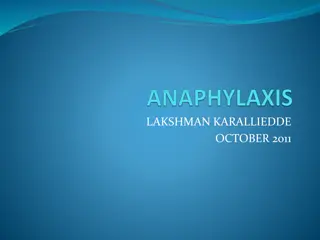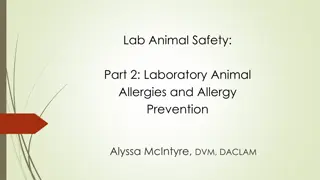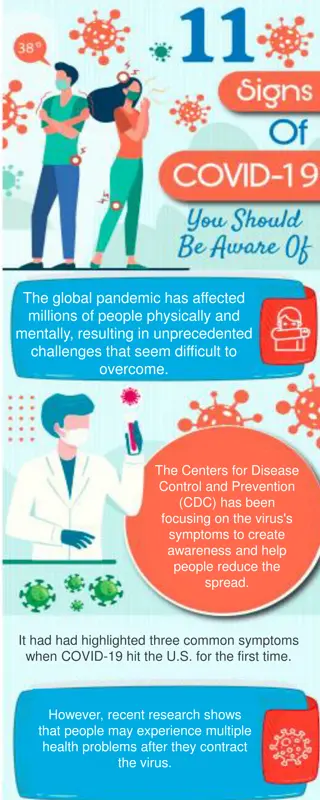Understanding Food Allergies: Facts, Symptoms, and Prevention
Food allergies are a common concern affecting millions of Americans, both adults, and children. Learn about the basics of food allergies, common trigger foods, symptoms to watch out for, and the importance of proper diagnosis and avoidance. With the right knowledge and precautions, it is possible to manage and prevent allergic reactions effectively.
Uploaded on Oct 06, 2024 | 0 Views
Download Presentation

Please find below an Image/Link to download the presentation.
The content on the website is provided AS IS for your information and personal use only. It may not be sold, licensed, or shared on other websites without obtaining consent from the author. Download presentation by click this link. If you encounter any issues during the download, it is possible that the publisher has removed the file from their server.
E N D
Presentation Transcript
K-State Research and Extension Golden Prairie Extension District #12 Amy Lorenzen Family and Consumer Science
Food Allergy Basics The science behind it all Our body has an immune system designed to protect us from germs and disease. A food allergy is an abnormal response of our immune system to a food protein. When the food is eaten, the immune system thinks the food is harmful and releases histamine and other chemicals to attack the enemy.
Food Allergy Basics Diagnosing a Food Allergy Detailed medical history Allergist will conduct skin-prick tests or blood tests or both Only way to truly diagnose if you have a food allergy
Food Allergy Basics There is no cure for food allergies Complete and strict avoidance of the food is the only way to prevent a reaction.
Food Allergy Basics 8 foods cause 90% of the allergic reactions to people in the United States. Each food has many different names. Important to learn the different names of foods and read labels.
Trigger Foods Eggs Fish Milk Peanuts Shellfish Soy Tree nuts (walnuts, pecans, macadamia, etc.) Wheat
Food Allergy Facts As many as 15 million Americans have a food allergy. 9 million of those are adults 6 million of those are children Food allergies seem to be on the rise
Symptoms-one or more may occur shortly after eating
Food Allergy Basics Symptoms: Trouble swallowing, shortness of breath, repetitive coughing, voice change Nausea, vomiting, diarrhea, abdominal cramping Swelling, hives, eczema, itchy red rash Drop in blood pressure, loss of consciousness
Food Allergy Basics Each person has a specific threshold an amount of food that sets the allergic reaction in motion. Tolerance level can fluctuate due to the dose, an illness or other stress in your life. Always be aware of anaphylaxis!
Anaphylaxis A SERIOUS allergic reaction that is rapid in onset and may cause death. Becoming aware of foods that you are allergic to is vital! Read labels! Ask! Carry a rescue device with epinephrine. Prompt administration of epinephrine can save your life!
Managing a Food Allergy Totally avoid food allergens by: Vigilantly reading labels and asking questions Careful food preparation and clean up. Always be prepared!!
Label Reading A Must! Read every label every time! Why? Companies change ingredients all the time and don t have to let you know. Don t rely on safe lists Allergens can be in non-food items: shampoos, soaps, detergents, skin products medications and pet foods.
Soy and its many names! Edamame Miso Natto Shoyu Soya Soy Soy Curd Soy Protein Soy Sauce Tamari Hydrolyzed Soy Protein Tempeh Textured Vegetable Protein Tofu Soy Milk
Careful Food Preparation Wash hands, cooking utensils and food prep surfaces to avoid reactions from trace amounts of proteins left behind. Liquid soap, bar soap or commercial wipes for hands, not antibacterial gel sanitizers. Dishwashing detergent and hot water for cooking utensils and cutting boards. Common household cleaners for counters tables and other surfaces.
Always be Prepared! Keep medications available at all times. Know and recognize the different names for allergens. Know and recognize the symptoms. Food Allergy Action Plan
The Three Rs Recognize the symptoms React quickly Review what caused the reaction
Eating Out Be vigilant about verifying ingredients and preparation methods with your server. DO NOT be embarrassed or afraid to tell your server about your allergies. Call ahead to find out what is on the menu if you do not know the restaurant.
Childrens Food Allergies As a parent or caregiver, you must be extra aware of what your child eats or comes in contact with. Distribute the Food Allergy Action Plan to all school personnel, from teachers to bus drivers. Help your child understand the importance of his or her food allergy.
Food Intolerance Does not involve the immune system. Produces a slow response to food, hours or possibly days after food was eaten. Harder to identify. Doesn t mean it is any less stressful or troublesome to have. Can be any food.
Food Intolerance Symptoms May be mild at first, but grow worse as time goes on. Sensitivity to: milk, corn, wheat, eggs or some other commonly-eaten food. Difficult to pinpoint when first started. May not have all the symptoms. Stress can make symptoms worse. Can change over time.
Food Intolerance Symptoms Mouth ulcers canker sores Nausea and indigestion Vomiting Heartburn Internal gas or flatulence Irritable bowel symptoms Stomach pains or cramps Diarrhea Constipation
Food Intolerance Identification Food diary Do only with physician s guidance Careful avoidance of food
Reputable Resources The Food Allergy and Anaphylaxis Network foodallergy.org Kids with Food Allergies kidswithfoodallergies.org The American College of Asthma and Immunology acaai.org National Institute of Allergy and Infectious Diseases niaid.nih.gov
K-State Research and Extension Golden Prairie Extension District #12 Amy Lorenzen Family and Consumer Science
